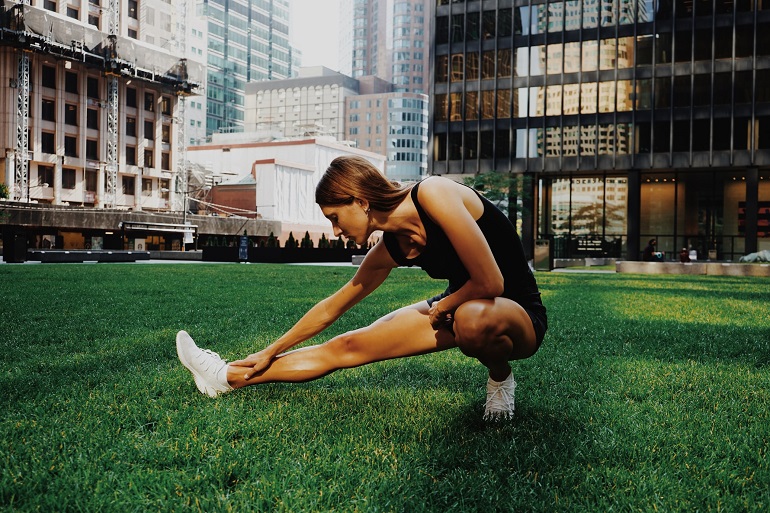Orthotic Friendly Shoes Guide: The Answer to Your Foot, Leg and Back Pain
Our feet are the main building blocks of our skeletal system. In today’s fast-paced lifestyle, we’re constantly subject to various problems such as back pain, foot pain or other uncomfortable sensations. In some cases, simple adjustments such as an ergonomic keyboard or a standing desk may help. At times when the root of all discomforts seems to be strictly connected to the feet, a doctor may suggest the use of orthotic shoes to prevent any further health complications.
Often confused with orthodontics (a dentistry specialty that addresses the position of the jaw and teeth), orthotics use artificial medical devices to correct certain body functions – mainly the feet. People that usually require orthotics are those with chronic pain issues, with high arches or no arches in their feet, those with injuries or difficult jobs that put a lot of strain on the feet.
Types of Orthotic Shoes

At first, “orthotic shoes” sounds like a pair of boring utility shoes focused more on functionality rather than aesthetics. While this was the case in the past, today’s new and improved models provide you with the best of both worlds. You can find models in different colours and styles designed to suit various preferences. These range from winter boots to stylish womens slip on sneakers, Mary Janes, classic sandals and more. Their versatility makes them viable for people of all ages.
The summer calls for enjoyable daily walks with your close friends. However, this can pose a challenge for people with chronic foot problems. Popular ladies summer sandals are either equipped with an uncomfortable high heel or have thin and poorly designed soles that provide no support to your foot whatsoever.
Orthotic shoes such as casual slip-on sandals or womens slip on sneakers have superior cushioning and are significantly more comfortable than ordinary women’s summer shoes. They’re made from high-quality and durable materials that will make your shoes last for many seasons.
How to Choose the Right Pair of Orthotic Shoes?
Although these are designed to help you treat any irregularities in your feet and bone structure, you still need to pay attention to a few important factors to ensure that your orthotic shoes are comfortable.
- Firstly, you need to pay attention to your shoe size. Shoes that are too big or too small can not only feel uncomfortable to walk in, but they can also lead to many injuries. Additionally, shoe sizes vary from one manufacturer to another, so it’s always a good idea to check their sizing charts and customer reviews.
- Secondly, keep in mind the weather conditions you’re shopping for. If you’re planning to wear these shoes in high temperatures, make sure that you pick a model with a thinner material that gives your feet enough room to breathe. On the other hand, humid weather conditions call for waterproof materials, as most summer shoes materials can get easily damaged by rain.
What Are the Benefits of Orthotic Shoes?

Orthotic shoes are carefully designed to relieve pain and even help treat foot injuries and other problems. They have easy on & off systems for people who have limited movement in their joints and secure closure for added protection. These shoes have an intricate cushioning system composed of several layers. They have a removable, leather-lined orthotic pad that is designed by a podiatrist (a medical professional that specializes in problems that affect your feet and lower legs).
One of the first things you probably check when shopping for shoes is their sole’s flexibility. A lot of manufacturers don’t pay that much attention to this feature that is vital for a healthy foot. Orthotic shoes are equipped with a softer midsole that provides more flexibility. This makes them ideal for both smooth and rough terrain.
Orthotic Inserts
The best thing about orthotic shoes is that they’re compatible with orthotic inserts. These are prescription medical devices that you wear inside the shoes and help treat foot problems, but also more serious deformities and conditions relating to the feet and bones. They go so far as eliminate the need for surgeries in some situations, such as with feet that have a high arch.
Orthotic devices and pads are much different from the ordinary shoe inserts that you can find in stores. These are acquired only with a doctor’s prescription. Ordinary shoe inserts may give you additional comfort and provide some extra cushioning on the heel, around the toes or throughout your entire foot. However, they’re not necessarily designed to alleviate pain and correct foot problems.
What Do Orthotics Treat?

Orthotic inserts are designed to treat a large number of medical conditions, not all necessarily connected to the feet:
- Hammertoes;
- Flat feet;
- High arches;
- Arthritis – Osteoarthritis and rheumatoid arthritis are known to cause poor positioning and discomfort in the feet.
- Back pain – Poor foot positioning caused by lack of cushioning and arches that roll inward can often cause back pain.
- Bursitis – This is an inflammation of the fluid-filled sacs in the heels and toes. Orthotics lessen the discomfort from bursitis by providing heel and arch support.
- Diabetes – Diabetes can cause loss of sensation in a person’s feet. Orthotics help by reducing the excess pressure and stress that can lead to ulcers.
- Heel spurs – Heel spurs are a condition of excess bone growth in the back of the foot. Orthotics help by reducing inflammation.
- Injuries – If a person has suffered trauma to their ankles or feet, wearing shoes with improper support may worsen the damage even further. Orthotics help in the healing process.
- Plantar fasciitis – This condition often causes heel pain and doctors often recommend orthotics to treat it.
- Cerebral palsy – This condition affects the way a person maintains their balance and posture. Orthotics help support the weakened muscle groups in the feet.
The Bottom Line
Orthotic shoes and inserts help with many medical conditions. If you or a loved one suffers from certain discomforts or pains in the feet, make sure to make alterations in your lifestyle. If they persist, you should make a doctor’s appointment to find out if there is a more serious underlying issue. Modern orthotic shoes effectively relieve feet pains and discomforts while upgrading your style. Models such as the stylish ladies slip on sneakers are ideal for giving your feet the love they deserve this summer.

